What to Expect During a Professional Pond Cleaning: A Guide for Minnesota Pond Homeowners
When Tom and Katie moved into their home in Prior Lake, the backyard pond was a dream come true. Nestled among their perennial gardens, the gentle sound of the waterfall had been a selling point from day one. But by the time they closed on the home and moved in, they realized that their dream pond needed some dedicated TLC. As they looked at cleaning it out, that shining dream started to lose its shimmer.
The water was cloudy. Algae had taken over. The bottom of the pond looked more like a swamp than a sanctuary. “We just didn’t know where to start,” Katie told us. “We wanted it fixed, but we didn’t want to DIY something this big and mess it up even more. Especially while we were still trying to unpack boxes and get settled inside.”
That’s when they called us after getting a postcard in the mail—and discovered that a pond cleaning isn’t just about making things look nice. It’s about preserving balance, protecting equipment, and setting up a system that runs effortlessly.
This article walks you through what actually happens during a professional pond cleaning like we did for Tom and Katie. Whether you’re a seasoned pond owner or just moved into a new home with a water feature, here’s what to expect—and why it matters.
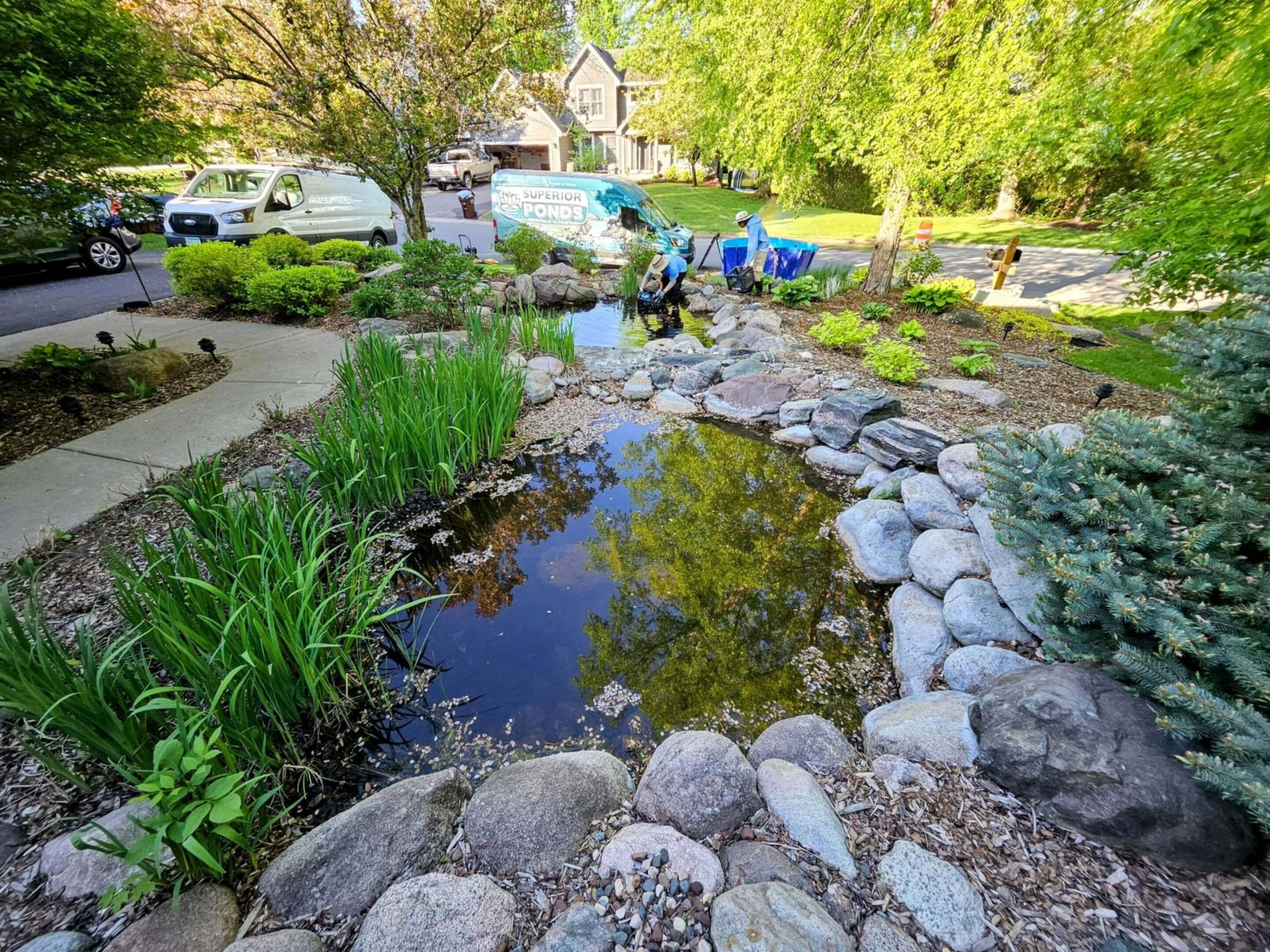
1. Arrival & Setup: What We Need Access To
When our team arrives, the first thing we’ll do is set up equipment and walk through the site with you. To get started, we’ll need:
- A working outdoor water spigot
- An accessible outdoor electrical outlet
- A disposal location for water and pond buildup
- Any pond equipment you have out and ready for us
- Enough space for our water holding tanks and gear
These tanks allow us to temporarily store as much of your pond’s existing clean water as possible, which does two things: it saves you money on your water bill and preserves the ecosystem you’ve already built. This clean water is reintroduced after the cleaning to avoid a full system reset.
Quick Tip: Refilling entirely with new water can force your pond to cycle from scratch, which can cause “New Pond Syndrome.” By reusing as much clean water, we reduce that transition time significantly.
With the right equipment and team training (we do these every day), most pond cleanings are scheduled by half and full days. Having access to everything we need upfront allows us to get in and out efficiently and focus on caring for your pond (rather than setup) the entire time we’re onsite.
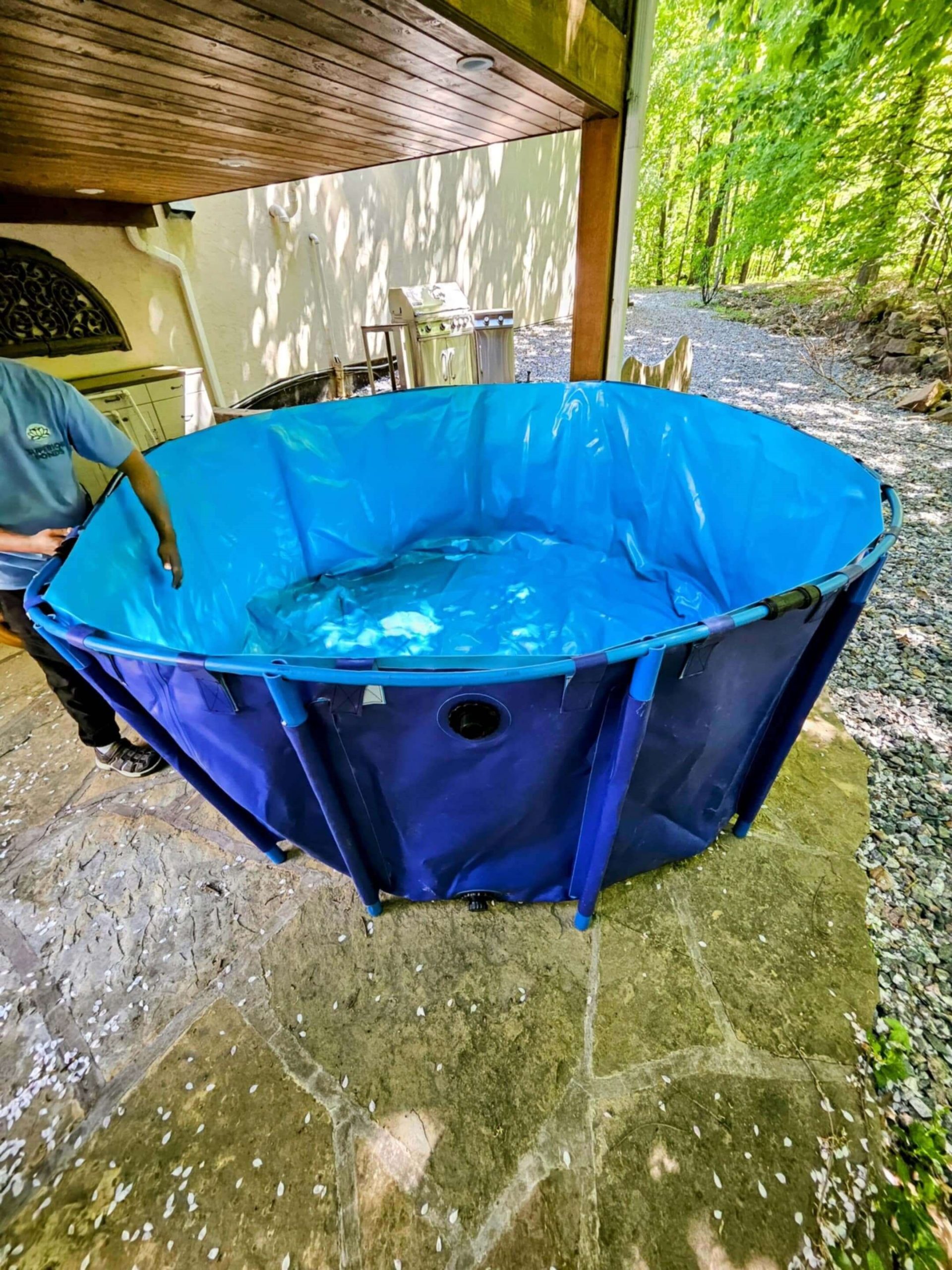
2. Water Clarity: Why It’s Cloudy After Cleaning (and When It Clears)
A common question: “Will the pond be crystal clear when you’re done?”
The real answer? Not right away.
Even after a thorough cleaning, your pond may still appear cloudy for 24–48 hours as your system re-cycles and beneficial bacteria reestablish themselves. This is totally normal—and it’s a good sign that your ecosystem is kicking back into gear.
We always finish your cleaning with a beneficial bacteria treatment, dechlorinator, and flocculant to jumpstart that process.
3. Sludge Removal: From Pond Bottom to Garden Gold
One of the biggest surprises for new clients is just how much organic sludge builds up in the bottom of a pond—especially in less-maintained systems. Leaves, decaying plant material, and fish waste all settle there over time.
Whenever possible, we leave this material in a designated compost area, your garden, or out in the nearby woods. It’s rich in nutrients and acts like supercharged compost once it dries out. If you’d like us to remove and dispose of it off-site, there is an additional charge for most loads due to weight and transport needs. If it’s just a few buckets of debris, we can handle it easily enough. But if we start talking more than a couple buckets, this is what you can expect for disposal costs:
- $80 for smaller amounts we can haul in our service vans
- $180+ for larger amounts requiring removal by our pond partner, Clean Slate Junk Removal (give them a call for your junk hauling needs!). When a debris pickup is needed, debris will typically be placed in a pile close to the road and removed within a week of your cleaning. Knowing ahead of time that you would like all debris removed from site will allow us to schedule a pickup same day or day after.
Some clients are surprised that off-site debris disposal isn’t automatically included. We do this to keep your upfront costs lower since we’ve learned from experience that many homeowners prefer to reuse this rich material in their gardens, and the total uncertainty of how much debris is on the bottom of your pond.

4. Water Disposal: What Happens to the Dirty Water
We will be draining dirty water out of your pond during the cleaning process. If you have a preferred location—like a wooded edge or garden area—please let us know ahead of time.
Any dirty water or light silt that ends up on the lawn will soak in within a few days. After a quick mow, it’ll look good as new. No long-term damage to worry about.
5. Filter Pad Replacement: The Quiet Workhorses of Clean Water
Pond skimmers and waterfall boxes (BioFalls) are designed to house poly-fiber filter mats. These are your first and second lines of defense:
- The skimmer filter pad protects the pump
- The BioFalls pad traps fine particles returning into the pond
Over time, these pads get clogged, brittle, or even fall apart. If yours are dark black, misshapen, or haven’t been changed in years, we’ll recommend a replacement:
- Skimmer pads: $100 (custom cut to your system)
- BioFalls pads: $150 (custom fit and installed)
Most homeowners don’t realize these are meant to be replaced annually or biannually, depending on usage. According to Pond Trade Magazine, failing filter media is a top contributor to declining water quality in backyard ponds across the Midwest. Just like your furnace filters, these poly-fiber pond filters are also not designed to last forever.
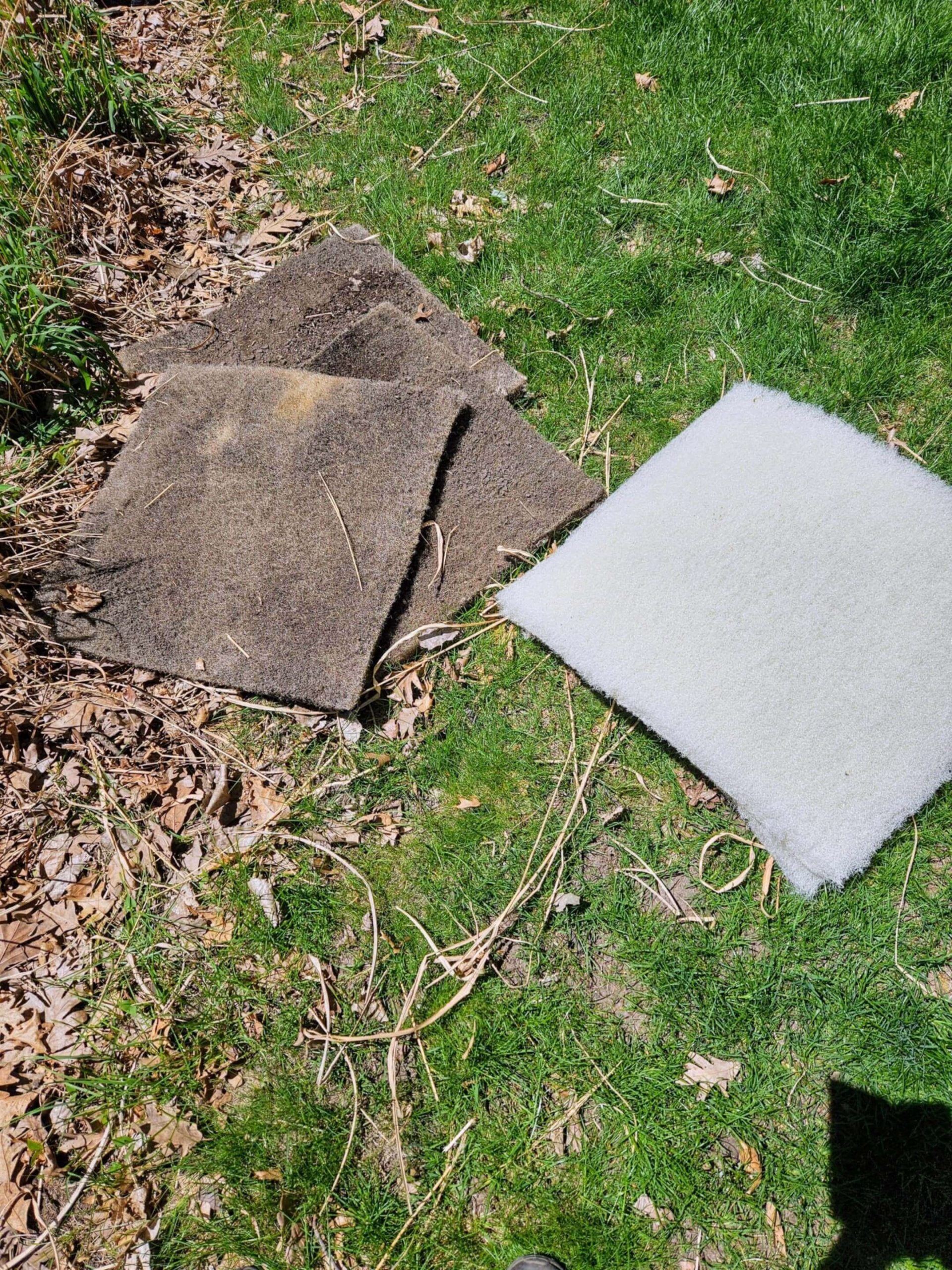
6. Bio Media: The Rock Mistake (And What to Do Instead)
Another common issue we run into is heavy lava rocks or river gravel stuffed into mesh bags inside the waterfall box. These were once popular, but here’s the issue:
- They’re extremely heavy (some older clients have thrown their backs out)
- They clog over time (become ineffective once clogged)
- They reduce beneficial bacteria growth due to limited surface area (more surface area the better)
We often recommend switching to lightweight bio-balls that provide far more surface area and are much easier to clean. Additionally, they last forever without having to worry about replacements. One and done!
- Standard BioBalls package: $250
- XL/Grand BioFalls size: $350
This switch alone can dramatically improve water clarity and filtration.
7. Invasive Roots & Plant Overgrowth: What We Trim vs. What We Don’t
Some of the most frustrating pond issues we encounter during cleanouts come from cattails, escaped water lilies, and other invasive aquatic plants that were never properly potted—or simply took over from neglect.
We always do basic plant trimming as part of your cleanout. This includes cutting back overgrowth that’s blocking skimmers, clogging equipment, or obstructing the waterfall. However, we do not remove embedded root systems from your pond during a standard cleaning. Here’s why:
- Invasive roots often entangle with liners and rockwork
- Digging them out risks damaging the liner and creating leaks
- Full removal is extremely tedious and requires specialized work and cutting equipment
Root removal is charged at $150 per square foot
This reflects the time and care required to extract roots without harming the structure of your pond. In some cases where the pond is overwhelmed by roots, it may be more cost-effective to rebuild the pond than attempt full removal. We’ll always walk you through your options.
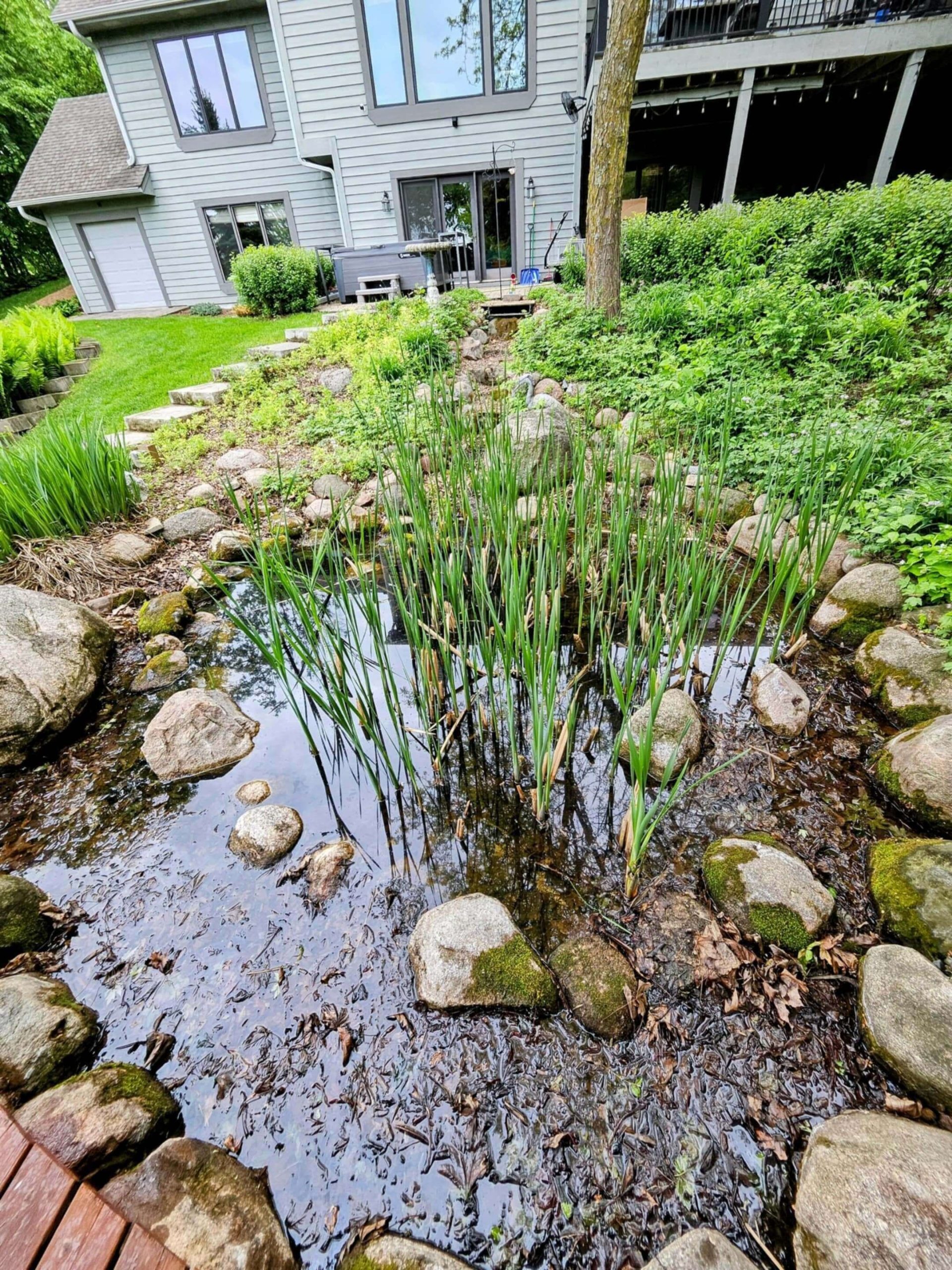
Why Proper Potting Matters
This is where prevention makes a huge difference. Most pond plants—especially lilies and marginals—should be potted in aquatic plant containers with proper soil and rock media to contain their spread.
If we see plants growing wild or out of control, we may recommend dividing and re-potting them the right way. This service typically runs $150 per plant grouping, including proper soil in a nature-friendly mesh container, aquatic plant fertilizer, and gravel topdressing.
8. Leak Checks: What We Look For
During the cleaning process, we always inspect for leaks. The most common culprits?
- Skimmer faceplate seals
- BioFalls spillway seals
These areas endure the most water movement and stress, and many were originally sealed with sub-par materials. Remember those invasive plant roots? They like finding the edges of faceplates and breaking through weak spots. If we find evidence of failure, we’ll recommend a reseal:
Typical reseal per faceplate:
- $1,200, including readjusting surrounding boulders, full faceplate removal, resealing, and curing using the right materials.
Leaks are often subtle, but over time, they can waste hundreds of gallons a day. The Minnesota Pollution Control Agency (MPCA) encourages all property owners to fix outdoor leaks quickly to prevent water waste and landscape damage. The more water waste, the more you pay on water costs, the more time you spend on refilling your system, and the more your system has to re-cycle new water.

9. Pump Troubleshooting: When It’s Time to Replace
If your pump sounds clunky, struggles to move water, is costing you a lot on monthly energy costs, or shuts on and off on its own, it may be on its way out. We’ll inspect the pump during your cleaning and walk you through any concerns.
Typical replacement costs:
- Pump (installed): $800–$1,600
- New check valve & fittings: $250 (if needed due to incompatible or worn plumbing connections)
Most systems need this every 4–7 years, depending on quality and care. Aquascape Inc. notes that proper maintenance extends pump life significantly—but wear still happens.
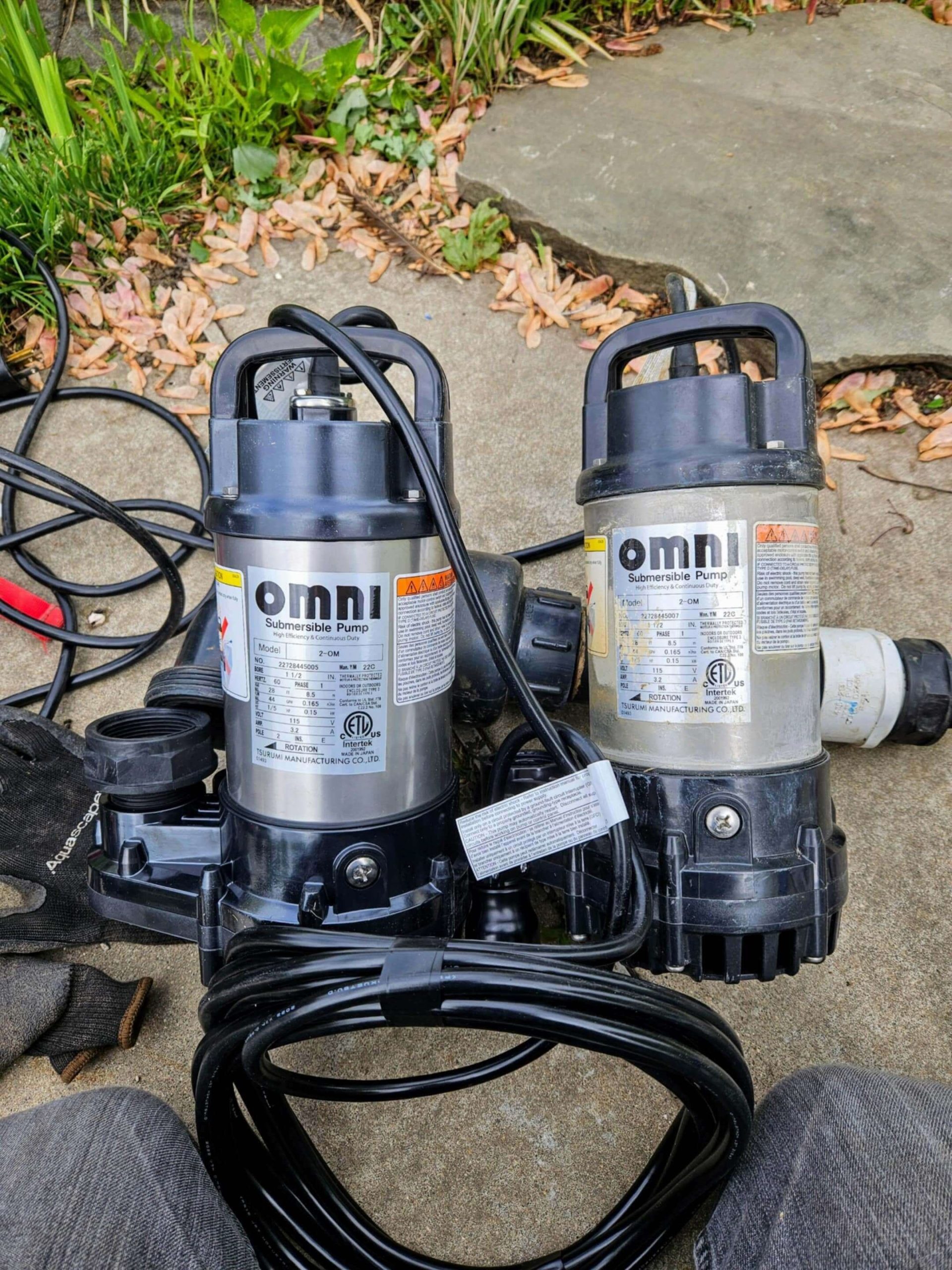
10. Water Treatments: What We Add and Why
At the end of your cleaning, we’ll apply the first treatment of beneficial bacteria to kickstart the ecosystem. For your city water and fish, we’ll also add a dechlorinator.
Ongoing care includes:
- Weekly bacteria treatments
- Seasonal treatments for clarity or string algae
- Optional auto-dosing systems for hands-free care
We carry treatment bottles on our service vans for $35 each and are always happy to guide you on what’s best for your pond’s specific needs. Whether that be beneficial bacteria, dechlorinator, flocculant, and more, we have you covered!
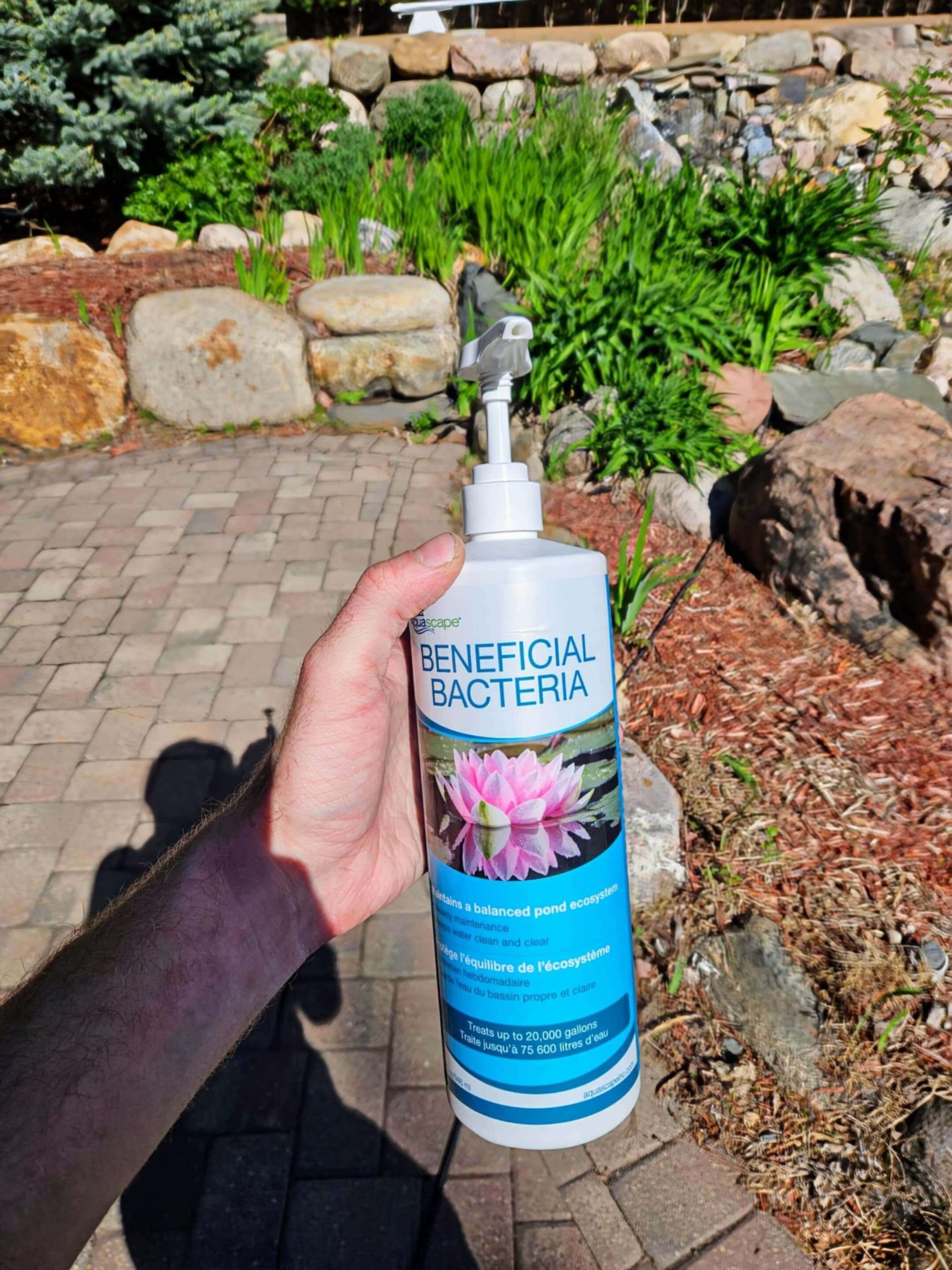
11. Common Upgrades We Recommend
Sometimes, homeowners don’t even know a solution exists for their biggest frustrations. That’s where our team loves to help.
We may recommend:
- Pond lighting for nighttime beauty (two ponds in one!)
- Automatic dosing systems if you forget weekly treatments
- Auto-refill systems to handle low water levels and save you time
- Algae control systems for persistent blooms
- Plant packages for a healthier, prettier, living pond
Just ask—we’re always happy to match upgrades to your lifestyle and budget, not just your pond.
Why This All Matters
Pond cleaning isn’t just a spring chore—it’s an opportunity to reset your system like nature does, protect your investment, and bring your outdoor space back to life.
At Superior Ponds, our goal is always to help you build a system that feels effortless. You shouldn’t have to stress over cloudy water, sludge build-up, or leaky liners. You should be relaxing by your pond, not wrestling with it.
What Will You Discover During Your Next Cleanout?
Maybe it’s just a layer of leaves. Maybe it’s a hidden leak. Or maybe it’s the start of a totally stress-free pond season.
What’s one thing you’d like to improve about your pond this year? Let us know—we’re here to help.
How Superior Ponds Can Help
We specialize in maintaining natural, ecosystem-style ponds throughout Minneapolis, St. Paul, and southern Minnesota. From spring cleanouts to full rebuilds, our services are designed to help you enjoy your water feature—not worry about it.
Whether you’re ready to schedule your next cleaning or just want to talk options, let’s start the conversation.
Contact us today to schedule your cleanout or ask a question. We’re happy to help.
